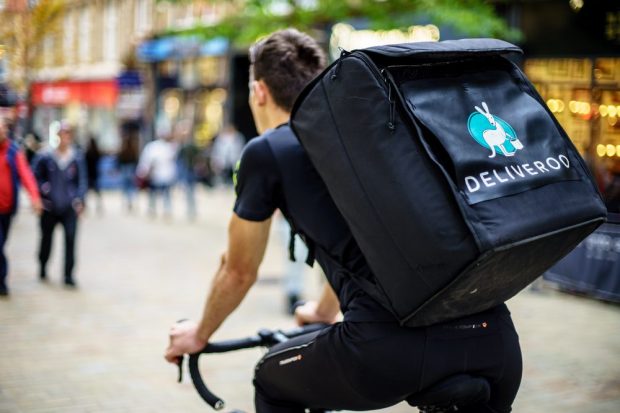Groceries Keep Deliveroo Customers Coming Back as Restaurant Takeout Slips

Rising prices have negatively impacted Deliveroo shoppers’ loyalty, but expanded grocery options are driving frequency.
The United Kingdom-based food delivery service shared on a call with analysts Thursday (Jan. 19) discussing its fourth-quarter financial results that it likely has already seen the worst of inflation’s impact on customer habits.
“We have seen slightly lower retention of existing customers in ’22, but then towards the last quarter of ’22, we’ve seen positive signs that that decline and engagement has stabilized,” Deliveroo CEO Will Shu said. “It’s definitely the less affluent customers that are, for obvious reasons, less engaged with the platform than they were previously. There’s a pretty stark difference between some of the less affluent customers and some of the mid-affluent and the greater-affluent customers on frequency.”
The company noted that its base of monthly active consumers was down slightly (1%) relative to 2021, with both acquisition and retention impacted.
Yet, as macroeconomic pressures affect these metrics, the company’s expansion of its grocery offerings is helping to drive frequency with those who continue to use the platform. The company added about 2,000 grocery sites over the quarter, bringing its total to 18,000.
“I think this is an essential service at the end of the day, and once people start using this, it is very sticky,” Shu said. “One thing that’s also helped a bit is grocery. Grocery, as we introduced before COVID, really has been habitual for people, and I think what we’re seeing is that instead of maybe doing a weekly shop, people are splitting up their previous weekly shop into smaller baskets.”
He added that the company expects the trend of smaller, more frequent grocery purchases to continue going forward.
Part of the company’s push for grocery comes from its Deliveroo Hop ultrafast delivery business, promising fulfillment within minutes from dark stores. Shu noted that the economics of the model is tricky, with dark stores working best in densely populated areas where the aggregator already has high penetration, making profitability possible at these sites. He added that the company had achieved four-wall profitability at locations in London and Paris.
Indeed, many consumers are seeking out grocery options more now as food prices rise, given that meals prepared at home are less expensive than restaurant dining.
Sean Connolly, CEO of consumer-packaged goods (CPG) company Conagra Brands, noted this trend on a call with analysts earlier this month, discussing the company’s second-quarter fiscal 2023 financial results.
“There was a trade-down into at home eating during COVID, and that has not fully reverted to away-from-home, because the prices of away-from-home have gone up so high that it’s a better value to continue to eat in-home, as people are trying to stretch their household balance sheet,” Connolly said.
Yet demand for instant convenience remains, and many grocers are noting the need to get online and open up delivery options if they want to retain their customers.
“Grocers are overwhelmingly working towards an omnichannel strategy [and] to satisfy use cases from weekly shops to last-minute needs,” Christian Freese, Uber’s head of grocery and new verticals across the U.S. and Canada, told PYMNTS in an interview. “Delivery plays an important part of that.”
